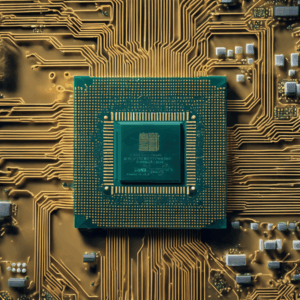
Is there a right to privacy in personal data, including biometric information, and how does it intersect with issues like informed consent, data security, and protection against identity theft? As an authority on the subject, I am here to shed light on this complex and important topic. In today’s digital age, where personal data is collected, stored, and used on a massive scale, understanding the right to privacy and its implications is crucial.
1. The Right to Privacy:
The right to privacy is a fundamental human right recognized by various international conventions and legal frameworks. It encompasses the individual’s right to control their personal information and to be free from unwarranted intrusion into their private life. This right extends to the protection of personal data, including biometric information.
2. Personal Data and Biometric Information:
Personal data refers to any information that can identify an individual, directly or indirectly. This can include names, addresses, social security numbers, and even biometric data such as fingerprints, facial recognition, and DNA profiles. Biometric information, in particular, holds unique identifiers that can be used to establish and verify a person’s identity.
3. Informed Consent:
Informed consent is a crucial aspect of data privacy. It involves obtaining the explicit and voluntary agreement of individuals before collecting, using, or sharing their personal data. In the context of biometric information, informed consent becomes even more critical. Individuals need to understand the purpose, scope, and potential risks associated with the collection and use of their biometric data.
4. Data Security:
Data security is paramount in protecting personal data, including biometric information, from unauthorized access, use, or disclosure. Robust security measures, such as encryption, access controls, and regular audits, are essential to safeguarding this sensitive data. Breaches in data security can have severe consequences, leading to identity theft and other malicious activities.
5. Protection against Identity Theft:
Biometric information, being unique to each individual, holds great value to identity thieves. If biometric data falls into the wrong hands, it can be used to impersonate someone, bypass security measures, and commit various crimes. Therefore, robust protection mechanisms, such as secure storage, encryption, and strict access controls, are necessary to prevent unauthorized use of biometric information.
6. Intersection of Privacy and Security:
The right to privacy and the need for data security often intersect. While individuals have the right to protect their personal data, including biometric information, organizations and governments also have a responsibility to ensure data security. Striking the right balance between privacy and security is crucial to maintain trust and protect individuals’ rights while minimizing the risk of identity theft.
In conclusion, the right to privacy in personal data, including biometric information, is a critical aspect of our digital world. Informed consent, data security, and protection against identity theft are all intertwined with this right. By understanding the complexities and implications of these issues, we can work towards a safer, more privacy-conscious society. Remember, your personal data is valuable, and protecting it should always be a priority.
Exploring the Boundaries of Privacy: Decoding the Right to Privacy Biometrics
Exploring the Boundaries of Privacy: Decoding the Right to Privacy Biometrics
1. Introduction:
– The right to privacy in personal data, including biometric information, is a topic of great importance in today’s digital age.
– This article will delve into the various aspects of this right, including informed consent, data security, and protection against identity theft.
– By understanding these issues, individuals can make informed decisions about their privacy and security when it comes to their biometric data.
2. Informed Consent:
– Informed consent is a fundamental principle in any data collection process, especially when it involves biometric information.
– Individuals must be fully aware of how their biometric data will be used, stored, and shared before giving their consent.
– Transparency is key, and organizations should provide clear and easily understandable explanations of the purposes and potential risks associated with collecting biometric data.
– Additionally, individuals should have the right to withdraw their consent at any time and have their biometric data deleted.
3. Data Security:
– The security of biometric data is crucial to protecting an individual’s privacy.
– Biometric data, such as fingerprints or facial recognition patterns, is highly sensitive and can be used for identity theft or unauthorized access.
– Organizations collecting and storing biometric data must implement robust security measures, such as encryption and secure storage systems, to prevent unauthorized access.
– Regular security audits and updates are essential to ensure the continuous protection of this data.
4. Protection against Identity Theft:
– Biometric data is unique to each individual and, if compromised, can be extremely difficult to recover or replace.
– Identity theft using biometric information poses a significant threat to an individual’s privacy and security.
– Organizations must adopt strict protocols to prevent unauthorized access to biometric databases and ensure that stored biometric information is not susceptible to hacking or theft.
– Additionally, individuals should have the right to be notified promptly if any unauthorized access or breach of their biometric data occurs.
5. Conclusion:
– The right to privacy in personal data, including biometric information, is a complex issue that intersects with informed consent, data security, and protection against identity theft.
– By understanding the importance of informed consent, ensuring data security, and implementing measures to protect against identity theft, individuals can have greater control over their biometric data and safeguard their privacy.
– It is crucial for organizations, policymakers, and individuals to work together to establish clear guidelines and regulations that balance the benefits of biometric technology with the protection of individual privacy rights.
Unveiling the Privacy Predicament: The Risks and Concerns Surrounding Biometric Data
Unveiling the Privacy Predicament: The Risks and Concerns Surrounding Biometric Data
1. Is there a right to privacy in personal data, including biometric information, and how does it intersect with issues like informed consent, data security, and protection against identity theft?
– Biometric data refers to unique physical or behavioral characteristics that can be used to identify individuals, such as fingerprints, facial recognition, or iris scans. With advancements in technology, the collection and use of biometric data have become more widespread, raising concerns about privacy rights.
2. The right to privacy in personal data, including biometric information, is a crucial aspect of protecting individuals’ autonomy, dignity, and personal freedom. It encompasses the notion that individuals should have control over their own information and be able to make informed decisions about its use.
– Informed consent plays a vital role in ensuring privacy rights in biometric data. Individuals should be fully informed about the purpose, scope, and potential risks associated with the collection and use of their biometric information. They should have the opportunity to provide explicit consent or opt-out if they do not wish to participate.
– Data security is another significant concern when it comes to biometric data. As biometric information is highly sensitive and unique, it requires robust security measures to prevent unauthorized access or misuse. Encryption, secure storage, and strict access controls are essential in safeguarding biometric data from potential breaches.
– Protection against identity theft is a critical consideration in the context of biometric data. Unlike passwords or PINs, biometric information is not easily changeable. If biometric data falls into the wrong hands, individuals can face serious consequences, including identity theft or fraudulent activities. Therefore, stringent measures must be in place to prevent unauthorized access and ensure the integrity of biometric databases.
In conclusion, the right to privacy in personal data, including biometric information, is of utmost importance. Informed consent, data security, and protection against identity theft are crucial elements in upholding this right. By ensuring individuals have control over their own information, implementing robust security measures, and protecting against unauthorized access, we can navigate the privacy predicament surrounding biometric data and strike a balance between technological advancements and individual privacy rights.
Exploring the Boundaries: Unveiling the Right to Privacy and Access to Personal Information
1. The Right to Privacy in Personal Data
– The right to privacy in personal data refers to an individual’s entitlement to control and protect their personal information, including biometric data. It encompasses the idea that individuals have the right to determine who has access to their data and how it is used.
– This right intersects with various issues, such as informed consent, data security, and protection against identity theft. Informed consent ensures that individuals are fully aware of the collection, use, and disclosure of their personal data, and have the opportunity to make informed decisions about it. Data security measures are necessary to protect personal data from unauthorized access or breaches. Protection against identity theft involves safeguarding personal information to prevent fraudulent use and misuse.
2. Informed Consent and Personal Data
– Informed consent plays a vital role in respecting an individual’s right to privacy in personal data. It requires organizations collecting personal data to provide clear and comprehensive information about the purpose of data collection, the intended recipients, and any potential risks or consequences. Individuals must be given the opportunity to freely and voluntarily provide their consent, without any coercion or deception.
– The intersection of informed consent and personal data is especially significant in the context of biometric information. Biometric data, such as fingerprints or facial recognition, can reveal unique identifiers and sensitive details about an individual. Therefore, obtaining explicit informed consent becomes crucial before collecting and using such information.
3. Data Security and Privacy Protection
– Data security is a crucial aspect of protecting the right to privacy in personal data. It involves implementing appropriate technical and organizational measures to safeguard personal information from unauthorized access, loss, or alteration. This includes measures such as encryption, access controls, regular security audits, and staff training on data protection.
– The intersection of data security and privacy protection ensures that personal data is handled securely throughout its lifecycle, from collection to storage and disposal. Organizations must be diligent in implementing robust security measures to prevent data breaches and unauthorized access, thereby upholding individuals’ right to privacy.
4. Protection against Identity Theft
– Protection against identity theft is another significant aspect of the right to privacy in personal data. Identity theft occurs when someone uses another person’s personal information without their consent, often for fraudulent purposes. This can result in financial loss, damage to reputation, and emotional distress.
– The intersection of protection against identity theft and the right to privacy emphasizes the need for individuals and organizations to take necessary precautions to prevent unauthorized access and misuse of personal data. This includes adopting strong authentication methods, regularly monitoring financial and personal information, and promptly reporting any suspicious activities.
In conclusion, exploring the boundaries of the right to privacy and access to personal information involves considering various aspects such as informed consent, data security, and protection against identity theft. Respecting an individual’s right to privacy in personal data requires organizations to obtain explicit informed consent, implement robust data security measures, and take steps to protect against identity theft. By understanding and addressing these critical intersections, we can better ensure the privacy and security of personal data.
Is there a right to privacy in personal data, including biometric information, and how does it intersect with issues like informed consent, data security, and protection against identity theft?
**Frequently Asked Questions:**
1. **What is the right to privacy in personal data?**
The right to privacy in personal data refers to an individual’s entitlement to control and protect their personal information, including biometric data. It encompasses the ability to decide who has access to this data, how it is used, and for what purposes.
2. **What is biometric information?**
Biometric information refers to unique physical or behavioral characteristics that can be used to identify an individual. This can include fingerprints, facial recognition, iris scans, voiceprints, and DNA. Biometric data is often considered more sensitive than other types of personal data due to its inherent link to an individual’s identity.
3. **What is informed consent and why is it important?**
Informed consent is the voluntary agreement given by an individual after being provided with sufficient information about the collection, use, and disclosure of their personal data. It ensures that individuals have a clear understanding of how their data will be utilized and allows them to make informed decisions about their privacy.
4. **Why is data security crucial in protecting personal information?**
Data security plays a crucial role in protecting personal information from unauthorized access, use, or disclosure. It involves implementing measures such as encryption, access controls, and regular security audits to safeguard data from potential breaches or cyber attacks. Maintaining strong data security practices is essential in upholding an individual’s right to privacy.
5. **How does the right to privacy intersect with protection against identity theft?**
The right to privacy is closely intertwined with protection against identity theft. When personal data, particularly biometric information, falls into the wrong hands, individuals become vulnerable to identity theft and fraud. Safeguarding personal data and ensuring its privacy is therefore essential in minimizing the risk of identity theft.
**Conclusion:**
In conclusion, the right to privacy in personal data, including biometric information, is a fundamental aspect of individual rights. It encompasses the control and protection of personal information, requiring informed consent, data security, and protection against identity theft. By respecting and upholding the right to privacy, society can ensure the responsible use of personal data and maintain trust in the digital age.









What if our biometric data leaks and we become accidental celebrities? 🤔👀
Privacy in biometric data is a slippery slope – where do we draw the line?
Do we really have a right to privacy in our personal data? Lets discuss!
Is privacy a luxury we can afford or a right we deserve? Lets discuss!